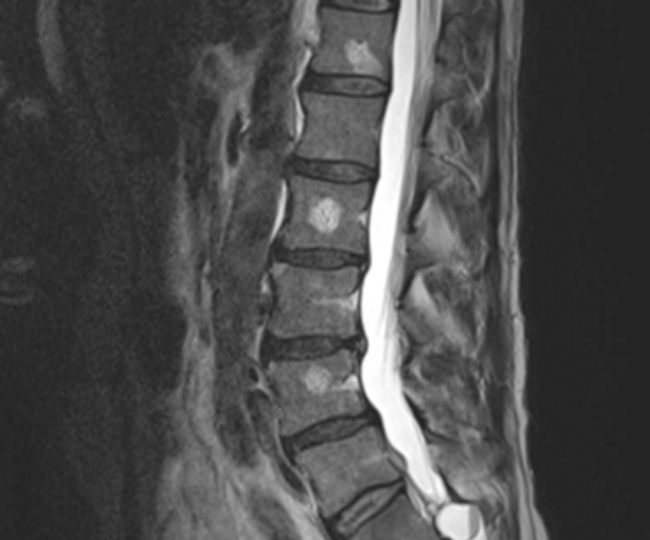Tarlov Cyst
Tarlov Cyst

Tarlov cysts are fluid-filled nerve root cysts found most commonly at the sacral level of the spine – the vertebrae at the base of the spine. These cysts typically occur along the posterior nerve roots. Cysts can be valved or nonvalved. The main feature that distinguishes Tarlov cysts from other spinal lesions is the presence of spinal nerve root fibers within the cyst wall, or in the cyst cavity itself.
Incidence and Prevalence
Small, asymptomatic Tarlov cysts are actually present in an estimated 5 to 9 percent of the general population.
Causes
Although the exact cause is unknown, there are theories as to what may cause an asymptomatic Tarlov cyst to produce symptoms. In several documented cases, accidents or falls involving the tailbone area of the spine caused previously undiagnosed Tarlov cysts to flare up.
Symptoms
An increase in pressure in or on the cysts may increase symptoms and cause nerve damage. Sitting, standing, walking, and bending are typically painful, and often, the only position that provides relief, is reclining flat on one’s side. Symptoms vary greatly by patient, and may flare up and then subside. Any of the following may be present in patients that have symptomatic Tarlov cysts.
- Pain in the area of the nerves affected by the cysts, especially the buttocks
- Weakness of muscles
- Difficulty sitting for prolonged periods
- Loss of sensation on the skin
- Loss of reflexes
- Changes in bowel function such as constipation
- Changes in bladder function including increased frequency or incontinence
- Changes in sexual function
Diagnosis
Tarlov cyst is difficult to diagnose because of the limited knowledge about the condition, and because many of the symptoms can mimic other disorders. It is best to consult a neurosurgeon with experience in treating this condition.
Tarlov cysts may be discovered when patients with low back pain or sciatica have a magnetic resonance imaging (MRI) performed. If a patient has bladder problems and seeks medical help from an urologist, there are tests that can help diagnose Tarlov cyst. The standard urological tests for Tarlov cyst help determine if the patient has a neurogenic (malfunctioning) bladder. A neurogenic bladder shows excessive muscularity. A third possible test is a kidney ultrasound to see if urine is backing up into the kidneys.
Nonsurgical Treatment
Nonsurgical therapies include lumbar drainage of the cerebrospinal fluid (CSF), CT scanning-guided cyst aspiration, and a newer technique involving removing the CSF from inside the cyst and then filling the space with a fibrin glue injection. Unfortunately, none of these procedures prevent symptomatic cyst recurrence.
Surgery
Tarlov cyst surgery involves exposing the region of the spine where the cyst is located. The cyst is opened and the fluid drained, and then in order to prevent the fluid from returning, the cyst is occluded with a fibrin glue injection or other matter.
Neurosurgical techniques for symptomatic Tarlov cysts include simple decompressive laminectomy, cyst and/or nerve root excision, and microsurgical cyst fenestration and imbrication.
Outcome
Postoperative CSF leak is the most common complication, but in some cases, these leaks may self-heal.
When all treatment options have been exhausted, it is very important for the patient to make any necessary lifestyle changes and to undertake a pain management strategy with his or her physician.
